About a decade ago now, I was walking through a park looking for mushrooms, not finding much. I knew a plant or two, but mostly everything that wasn't a mushroom seemed to be part of an undecipherable wall of green.
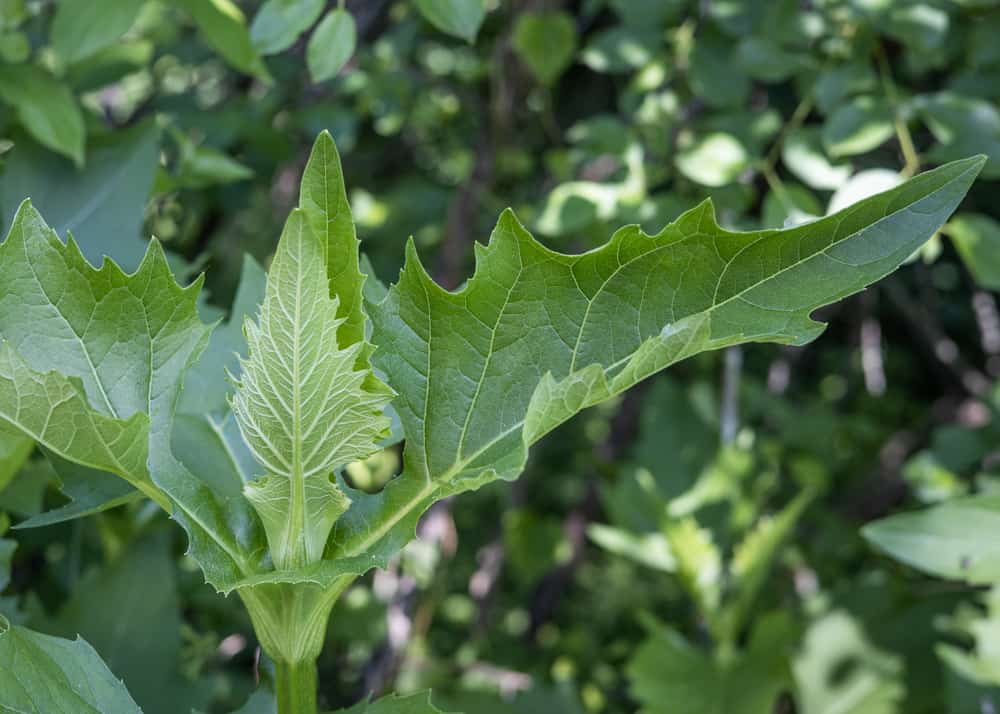
I remember coming across a giant, handsome colony of plants, with beautiful toothed leaves and a funky cluster of young, tender leaves at the top of each flower stalk.
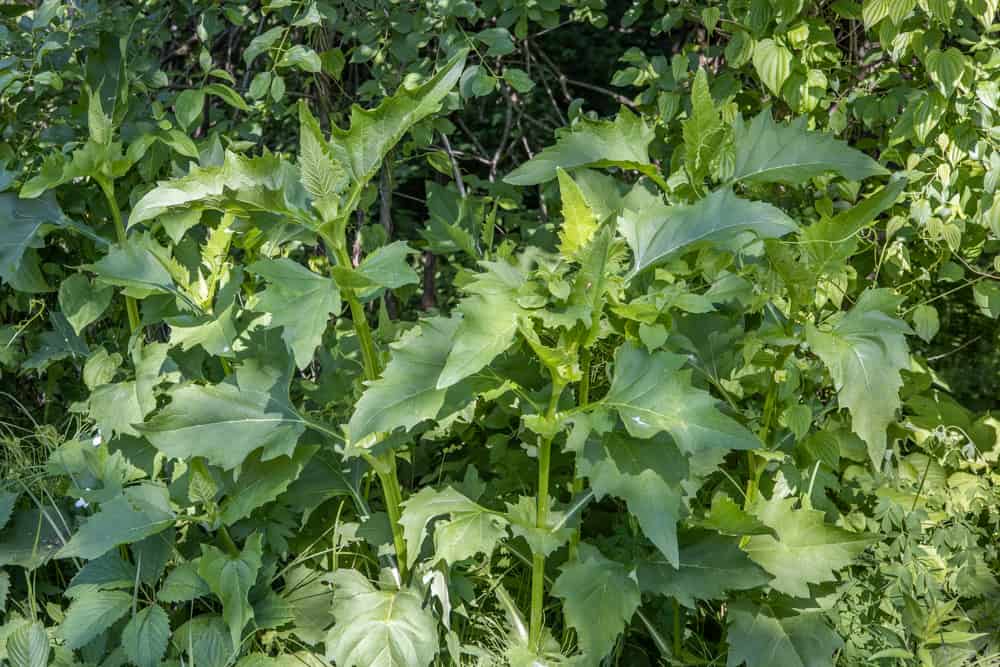
The young meristems (young growth) at the top in particular called out to me, so I took a few home to try, ignorantly, and for reasons I cannot understand, under the impression it was a sort of pigweed / amaranth (for the record I know this is a silly, amateur mistake, I'm just being honest).
I cooked some and enjoyed them, but got caught in the mushroom game and kept forgetting to share my experience with them. To date I haven't seen this plant described in any book I own on wild edibles sans Daniel Moerman's Native American Ethnobotany. The notes and information here are drawn from my own experience harvesting and eating them over the years.

A few years later I learned the plant as Silphium perfoliatum, or Cup Plant, with the common name referring to the cups created by the leaves that connect at the flower stalk forming a little basin that often holds water (a characteristic known as being perfoliate).
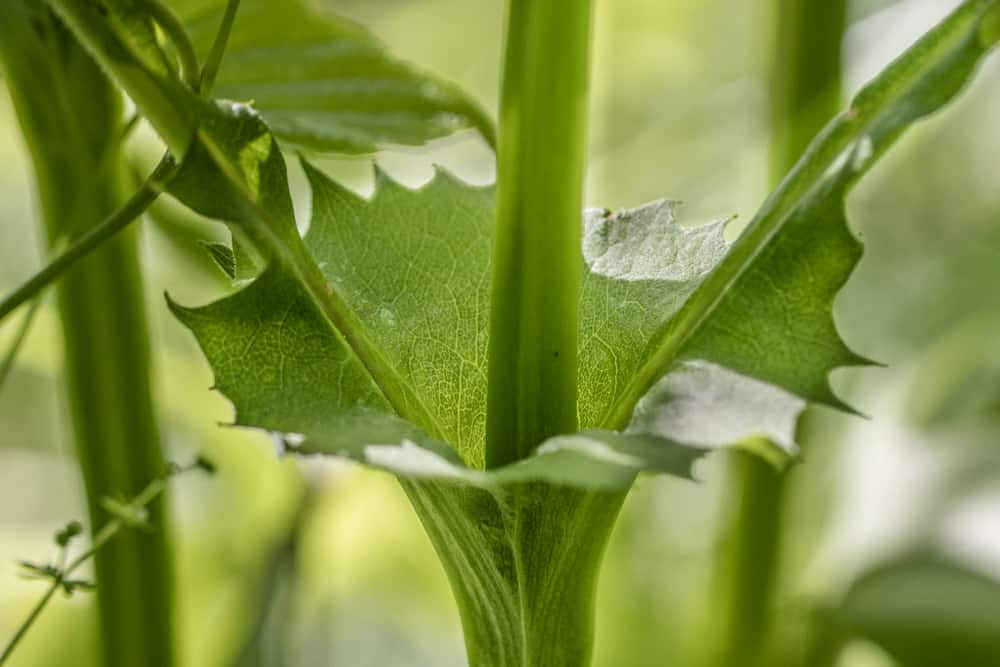
Those cups where the petioles and leaves meet are a useful natural formation, providing water for birds and insects.
Side Notes
- Cup Plant isn't as romantic a name as this delicious plant deserves, so I prefer to just call it "Silphium"-a nod to an herb now thought to be extinct used in Ancient Rome (often alongside the not-extinct Asafoetida/Hing).
- Another plant with a similar name (and a terribly strong flavor I don't care for) is Leaf-Cup (Polymnia canadensis). You might see the plants growing near each other, but they look quite different.
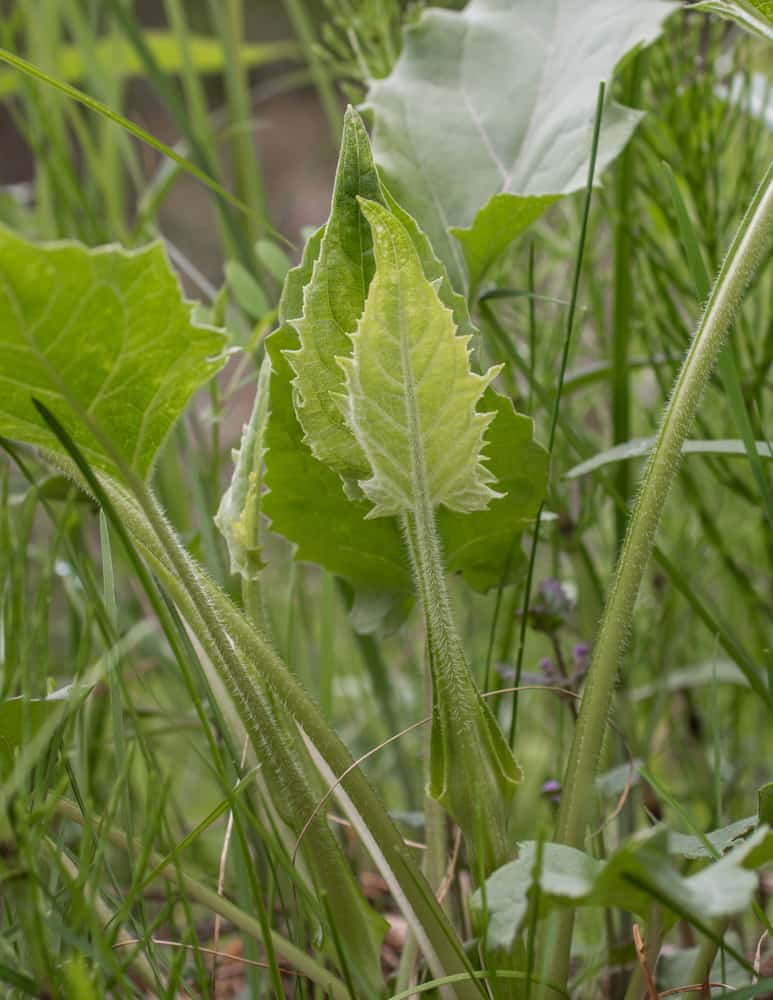
Silphium is in the daisy and dandelion family (Aseteraceae) making it also related to Sochan, and the flavor of the cooked greens will reveal its heritage when you eat it. Raw the leaves and young growing meristems have a strong flavor, but the taste is mellowed by blanching.
Just like Sochan, the flavor and texture of the leaves seems to intensify with age, but the meristems, harvested at the right time, will be more mild. I've cooked the young basal leaves and also found them just fine for eating, as long as you know what you're in for.
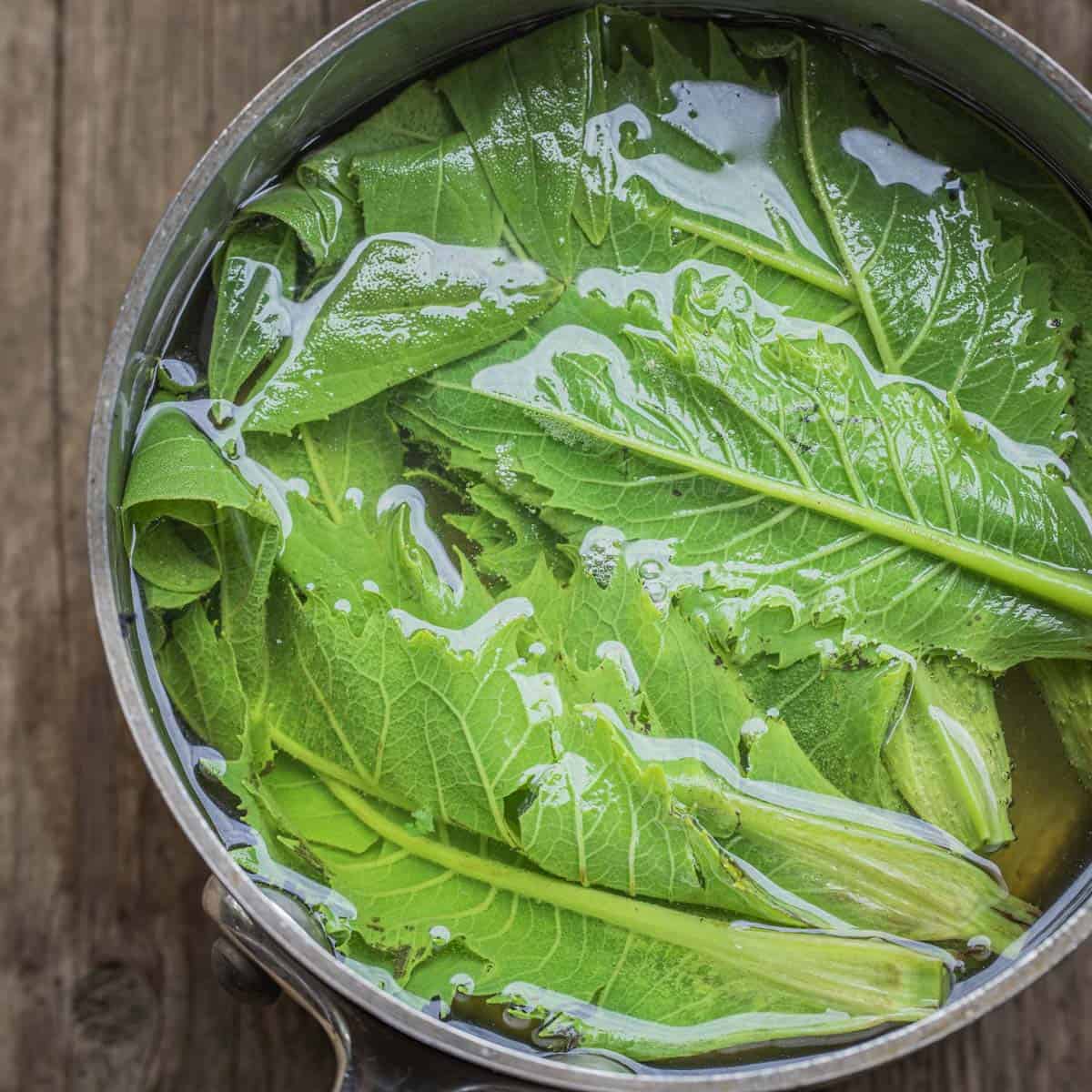
Harvesting
Silphium is very stable in terms of sustainability from what I know, and I often see very large wild colonies, but I only harvest from places where I see multiple colonies in one place-not when the plants are growing singularly, which I see more often than not in shaded areas.
The densest, largest colonies I know of are all in full sun, and the full-sun plants I see will often be taller than a grown man. For the top meristems that I would say are the choicest part of this plant, I just reach in and twist them off. I cut the leaves off with a scissors.
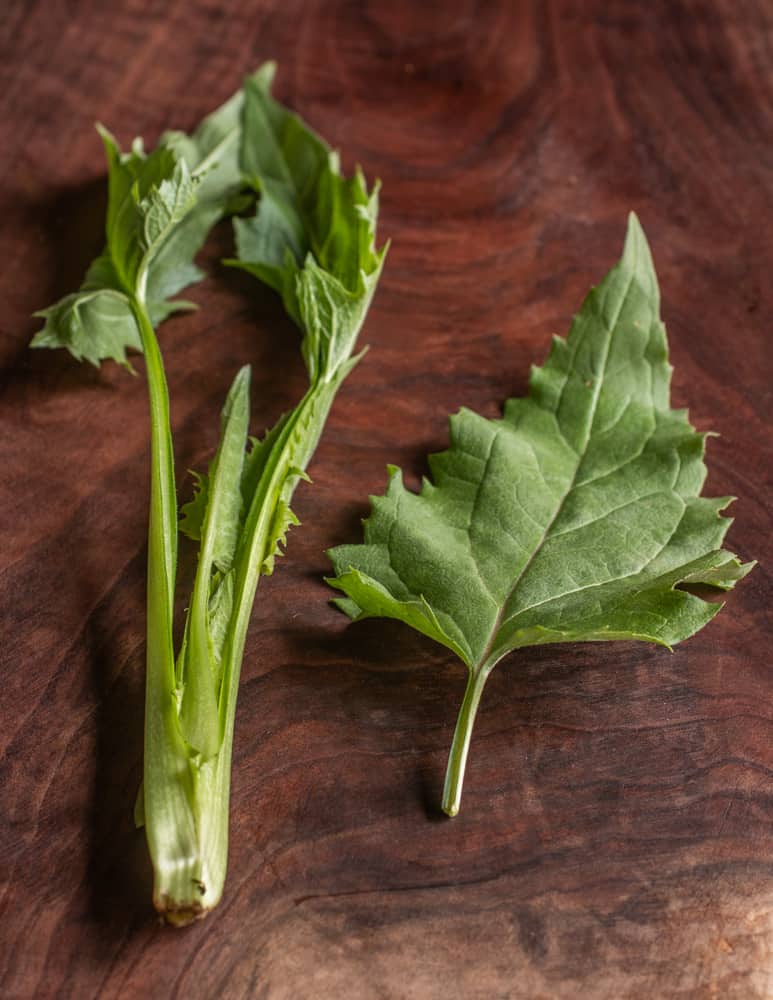
After I harvest them and bring them home, I refresh the plants in cold water for at least 30 minutes (depending on how far they had to travel and how wilted they are).
After they're perked up, I spin them dry and refrigerate them in large zip-top bags. Fresh Silphium seems to degrade at a quicker rate than most other plants I harvest, and will start to darken around the edges and discolor after 3-4 days of refrigeration where other greens (Lambs Quarters) may last two weeks. Blanched greens will keep for a similar time frame.
Cooking
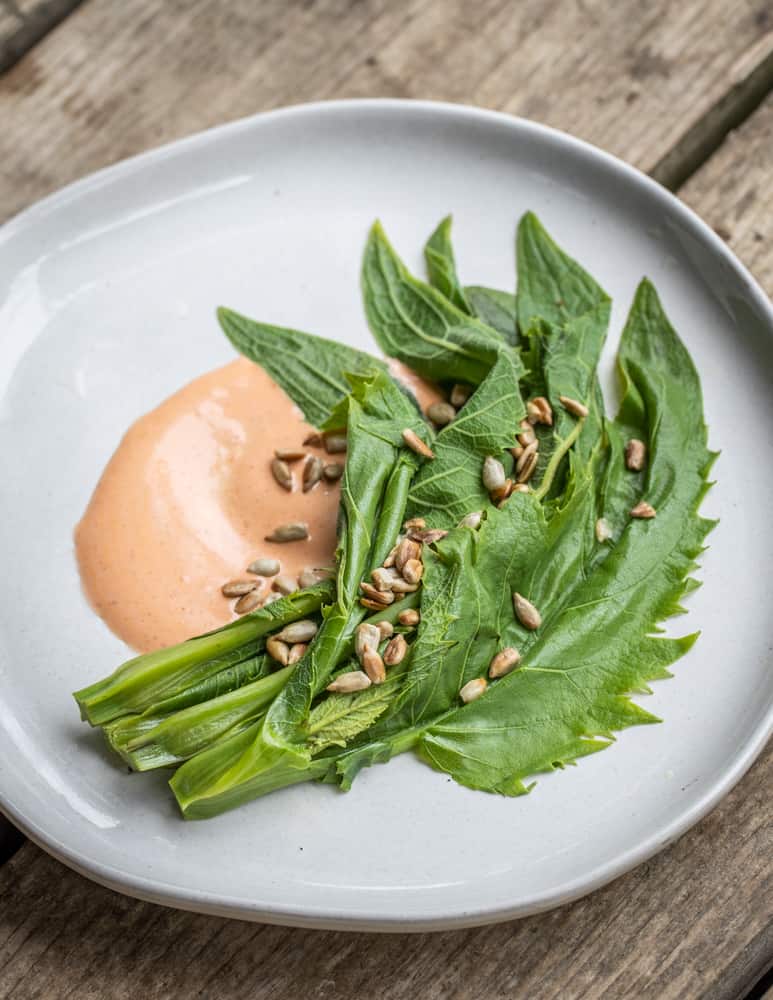
This is a strong tasting plant, but it's not even close to as strong as something like goldenrod. Personally, I'd compare the flavor more to Sochan. Sample a mature leaf raw and, if you're like most people I've offered them to, you may spit them out. Don't be fooled though-this is a food plant.
After a quick blanching, and then more importantly, eating in combination other things, you might even find that you barely notice they're there. If you have picky eaters, you can also give them a pre-blanch soak as I outline at the bottom of the post, which will mellow the taste even more.
Young Meristems
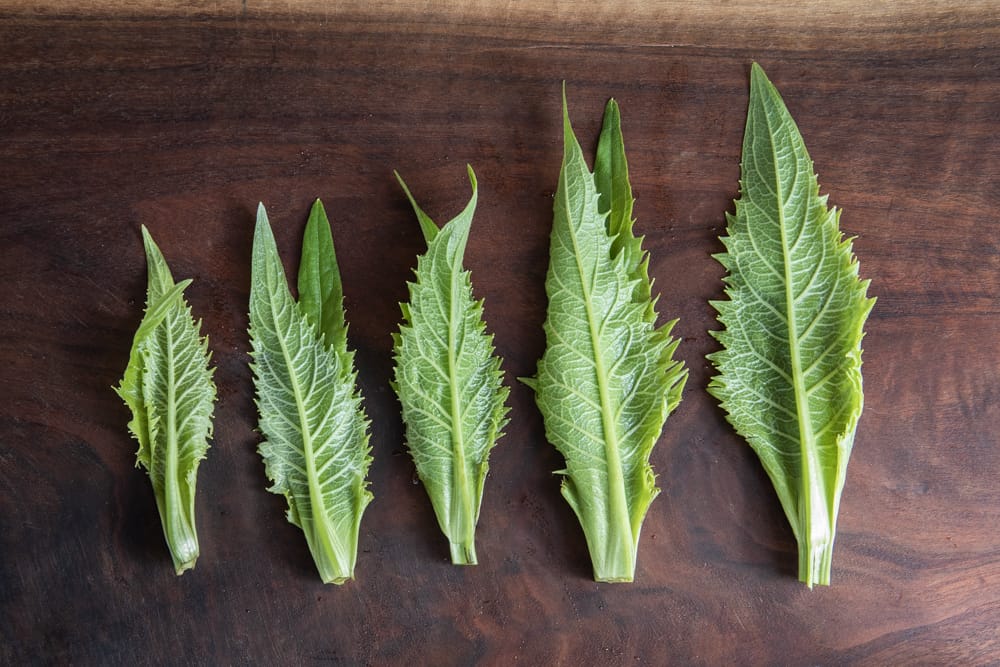
My favorite part of the plant. I mean c'mon! Just look at the young cluster of leaves! I love the irregular serration of the leaves and the pronounced stem portion at the bottom where the leaves connect. Like so many other things in the world of wild food, to me, they look like some sort of vegetable from another dimension.
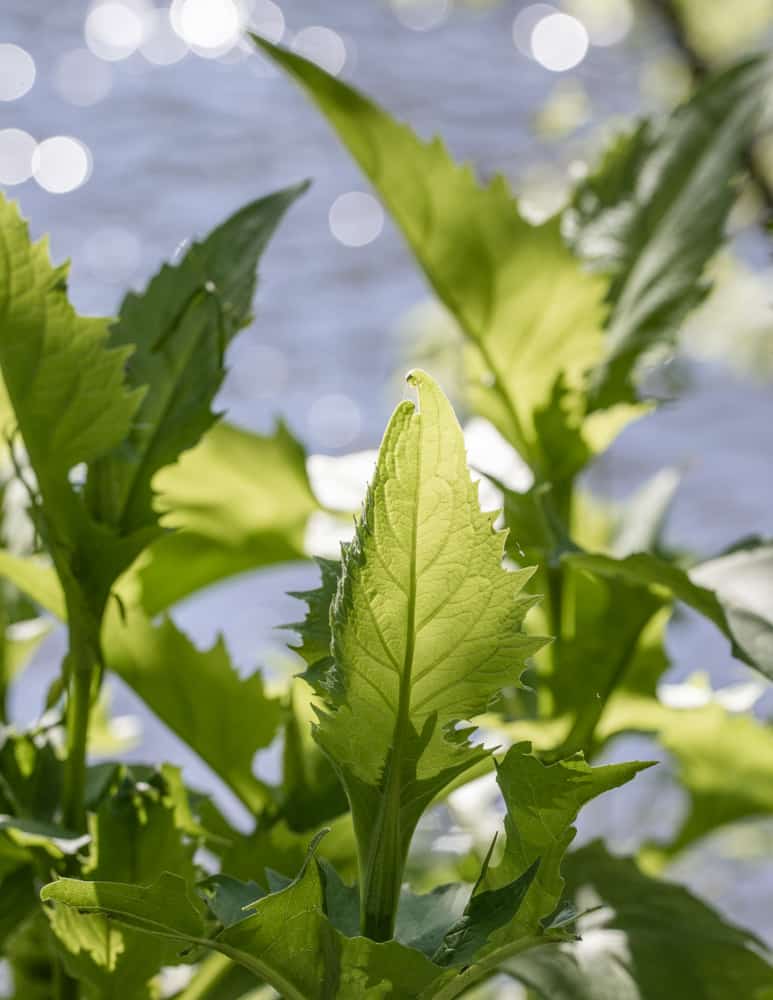
When I find large colonies of them, I can get a good amount of the top meristems for the table. I try to make sure I leave a few tops in each colony since harvesting the top meristem means the plant may not flower or grow as tall, and birds love the seeds that come in the fall.
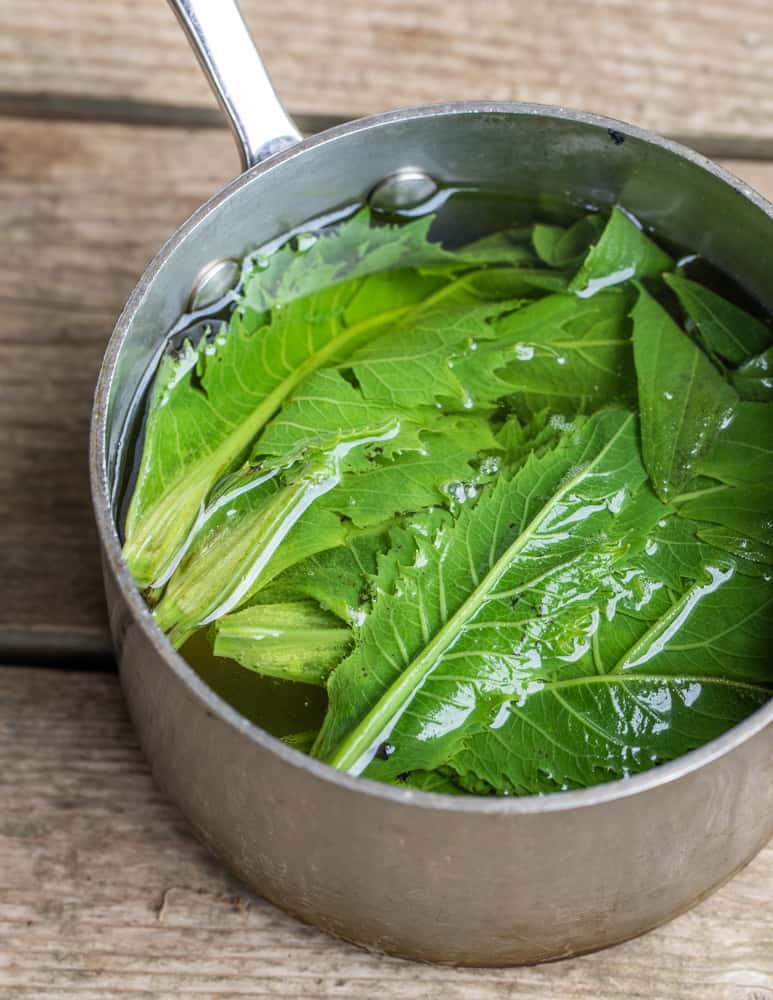
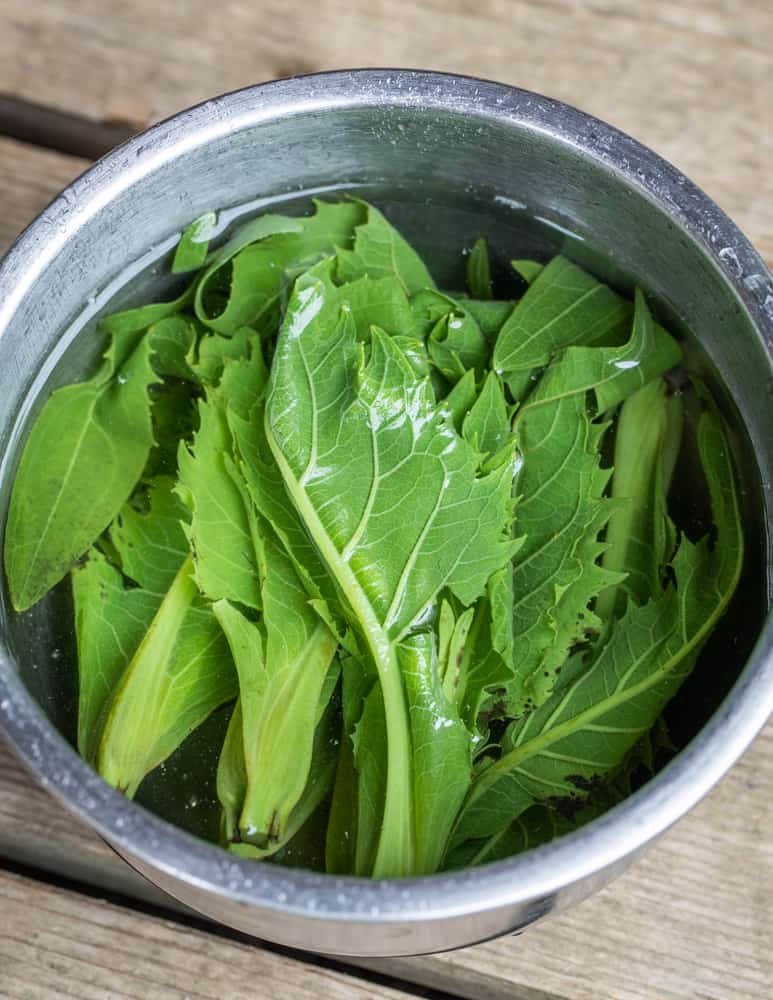
After blanching, the tender meristems or very young greens can be gently reheated and eaten as you would any other green plant or leafy vegetable, although if you use them for a side dish of greens you may want to add, say, 25% of another mild tasting green. Do not shock the plant in cold water after blanching as it may cause it to discolor (just like fiddleheads).
Leaves
The leaves, when very young (a few inches long) can be cooked like a green. The mature leaves are generally a little too strong and fibrous for adding to a bowl of wilted greens.
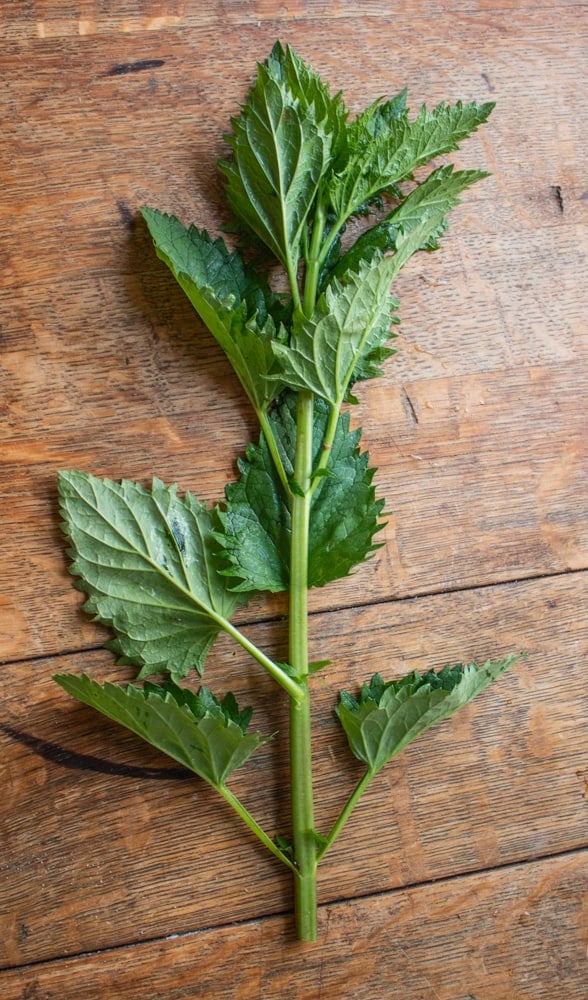
The mature leaves are naturally less young and tender than the young clusters of leaves at the top of the flowers stalks, but they're useful because of their size. Mature Silphium leaves are going to be quite large, often nearly twice the size of large grape leaves.
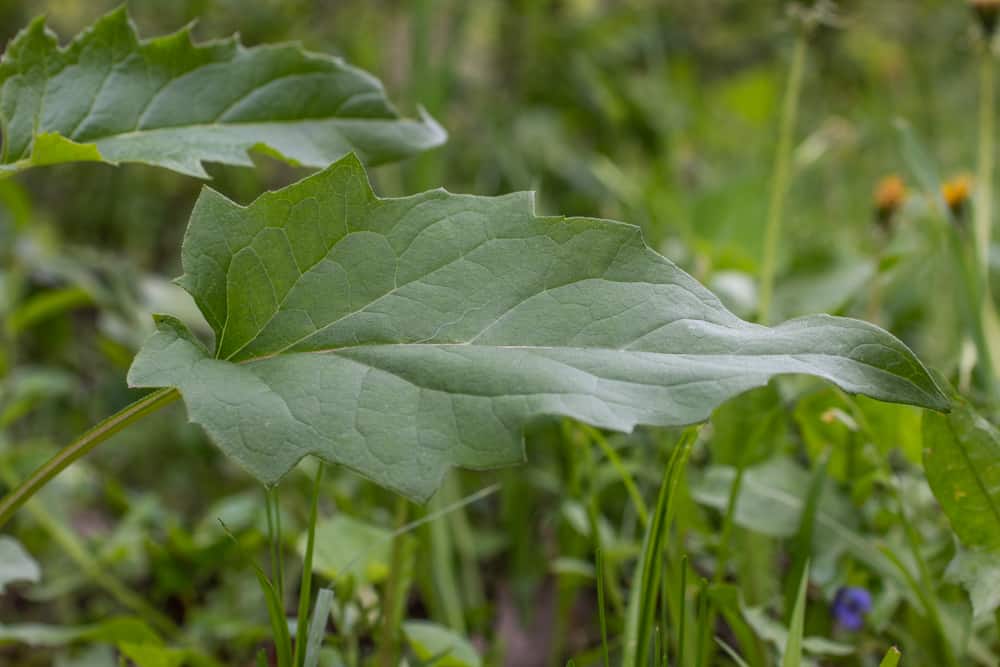
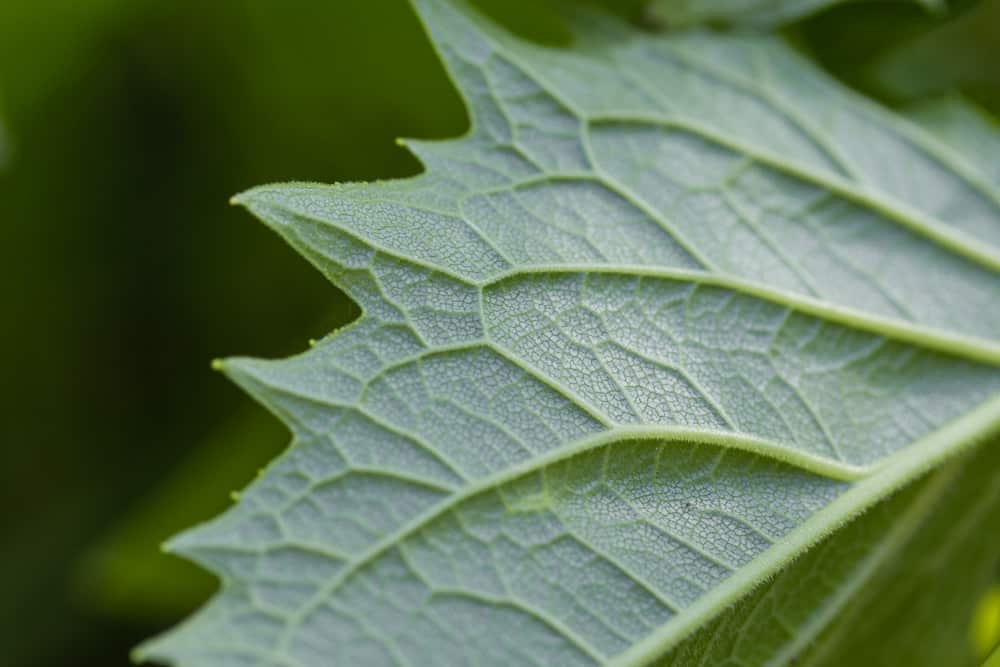
Just like grape leaves, they're perfectly suited for wrapping food like grape leaf rolls. Some are so large I've used them to wrap tamales in a nod to their triangular shape that could be compared to corn husks.
You'll have to taste them and be the judge. Cooked with strong flavors, like in a curry, some people will no-doubt enjoy the leaves as-is.
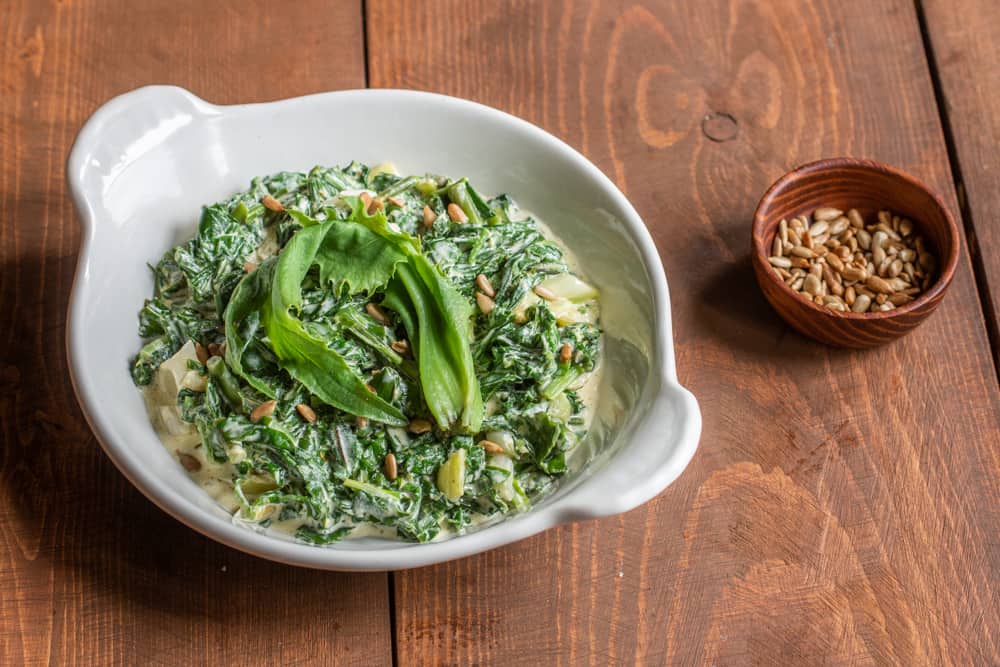
Unopened Flowers

The green unripe flower buds are ok, but nothing too special. What I found interesting about them was their flavor, and eating these were one of the plants that helped me form the essay in my book "Acquired Taste: Plant Families and The Flavors They Share"- now a keynote speech I'll give to chefs on understanding and harnessing the flavors of plants and using a little botany in the kitchen.
The unopened flower buds of this plant taste stronger of sunflower than any part of the sunflower plant I've eaten, and I've eaten them all. After blanching they'll get semi-tender but are nothing near as good as the young meristems or greens. I leave the flowers to make food for birds.
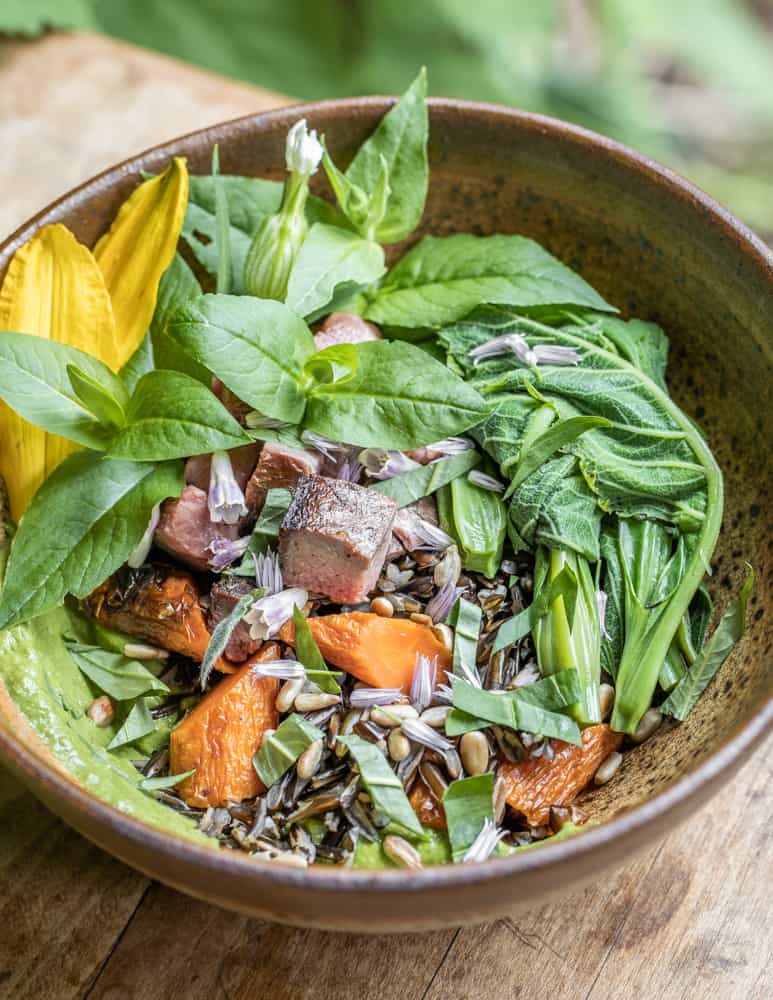
Silphium Shoots
Equipment
- 1 3 quart blanching pot
Ingredients
- Young shoots of silphium, as desired
- Kosher salt, as needed
- Water, for blanching
Instructions
- Bring a pot of salted water to a boil (roughly 1 tablespoon per quart of water)
- Add the silphium shoots and cook for 1-2 minutes.
- Remove the shoots and cool naturally, do not shock them in ice waer as it may cause them to discolor-they need the residual heat of cooling to retain their brilliant green.
- Taste a shoot. If you find it a bit strong for you, soak the blanched shoots in water in a bowl in the fridge (leaving them on the counter will shorten their shelf life) for 2-3 hours, then drain, pat dry, and refrigerate until you're ready to use them, preferably in a day or two.
- Add the shoots, whole, without chopping them, to dishes where a small vegetable like bok choi would be welcome. They're particularly good with rice bowls, and in small amounts as a garnish. They can also be served, dressed with olive oil, salt and a dash of fresh lemon juice if you like the flavor of them straight up, or served as a vegetable side with some sort of aggressive condiment.
Notes
Wild Rice Bowl with Silphium Shoots and Vegetables
Ingredients
- Cooked wild rice or another grain, as needed
- Roasted or leftover vegetables Whole-roasted carrots pictured
- Silphium shoots / top meristems 2-4 per person
- Leftover meat, like a roast, cut into small cubes Optional
- Kosher salt and fresh ground black pepper
- Good oil, like EVOO, or whatever you like
Garnishes
- A creamy condiment Pictured is avocado salsa, but garlic aioli, or spicy mayo is good too.
- Fresh Herbs Rau Ram is used in the picture, but cilantro, mint, or basil would be fine too.
- Toasted nuts or seeds, a sprinkle Optional
- Fresh small greens, to garnish Chickweed pictured
- A few wildflowers Optional, comfrey and chive flowers pictured here
Instructions
- Blanch the Silphium shoots/meristems as outlined above and reserve.
- Heat as saute pan on high with a little oil. Add the meat and leftover vegetables and heat through, then add the rice, stir, cook just long enough to get it hot. Taste and adjust the seasoning.
- Take a spoonful of your creamy sauce of choice and smear it alongside one side of each serving bowl.
- meanwhile, heat the silphium shoots in a pan or just keep them warm in their blanching liquid. Pat them dry before serving so they're not watery.
- Spoon in the rice, vegetables and meat into each serving bowl. Arrange a few Silphium shoots on top, garnish with a few baby greens, a sprinkle of fresh herbs, and wildflowers, nuts or seeds if using, a drizzle of extra oil, and serve.

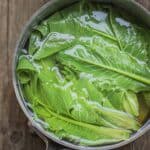
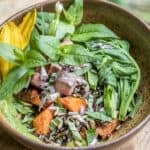
Heather McMonnies
Hi Alan,
Are the opened flowers edible and do they taste similar to helianthus?
Cheers, Heather
Alan Bergo
Yes they're edible. I can't recall the flavor of the opened flowers well, but the unopened buds tasted strongly of sunflower.
Carol
I think I saw some cup plants today while harvesting black raspberries in WI. So I reread your article, and looked up others, before I plan to go back and harvest a few. I love your videos and recipes!
Here’s an interesting article on the edibility of early growth. https://www.newstribune.com/news/health/story/2016/may/04/dining-wild-cup-plant-runneth-over-flavor/619509/
Alan Bergo
Thanks Carol.
Lani
I couldn't find Silphium perfoliatum or Cup plant in either the USDA Plants Database or Oregon Flora... BUT such as GoBotany as 'Cup plant/Rosinweed' AND both boththe USDA Plants Database and Oregon Flora several 'Rosinweeds' as Calycadenia... with 4 native species in Oregon. are these the same plants?? Particularly Calycadenia truncata DC. or Oregon western rosinweed...???
https://plants.usda.gov/home/plantProfile?symbol=CATR3
https://oregonflora.org/taxa/index.php?taxon=3533
Thank you,
Lani
Lani
I found it.. doesn't seem to appear west of about the Mississippi..
Alan Bergo
Lani, I would assume they're not the same, but they look related.
Kat
Rosinweed is both the name of several similar species in the Silphium genus t’)they grow about 3-5’ tall and look similar to sunflowers) and a name sometimes used to refer to all Silphium species. The genus Silphium includes rosinweed, cup plant, compass plant, and prairie dock.
Dotty
Is leaf cup which grows here in same family?
Joe Lynch
Native Iowa prairie has a cup plant, I have in my prairie plant many years ago. Looks similar, has a square stem, is it the same plant?
Alan Bergo
I would assume so but can't speak to it for certain without some Latin names.
David Britton
Was aware of this as cattle fodder after I'd looked it up following my discovery of a huge neighbourhood patch next to my local elderberry haunt. It briefly crossed my mind as a possible edible. On my way!
Alan Bergo
It's a good plant.